
The camera platform was suspended from a bungie cord attached to a 70-lb static load capacity vacuum suction cup secured to the flight deck wall in a panel pass-through. |
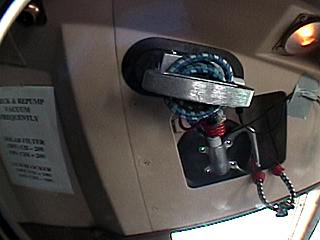
During the set-up of the equipment, a second suction cup was rigged as a safety against a possible loss of vacuum (and load bearing) of the primary suction cup. |
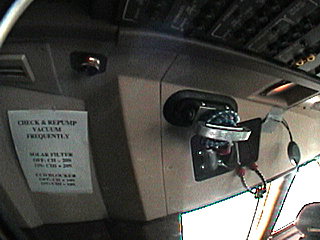
A sign hung right above the second observer's seat was a constant reminder to "check and re-pump" the suction cup vacuum pressure frequently. |
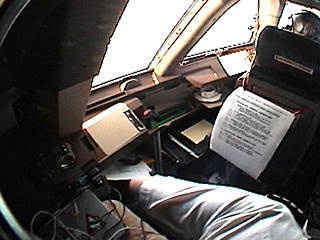
The support point for the camera/gyro platform was immediately above the window behind the pilot's seat. Operations procedures document attached to seat back. |
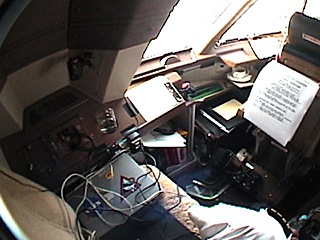
110 VAC 400 Hz gyro power inverters and Ni-Cad battery packs attached with velcro to bottom of pilot's seat and flight deck floor next to seat rail system. |
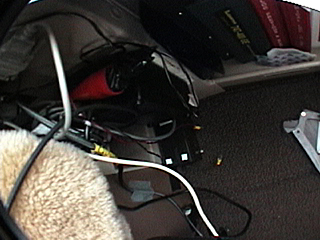
12 V DC-to-DC regulated power supply and Ni-Cad battery source for SBIG CCD camera velcroed to flight deck wall and floor next to observer's seat. |

Camera operations laptops on seat; film and video guide camera with PowerBook, CCD camera with ThinkPad. UMBRAPHILE and NIKON VR interfaces velcroed on shelf. |

Rotating swivel clip held bungie cord to suction cup permitting alignment. Loosely coupled safety ropes straddle platform support but do not hinder floating support. |
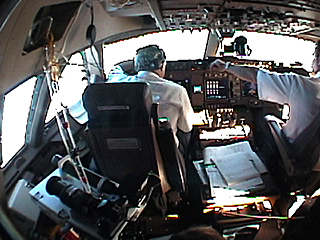
Camera/gyro platform fully rigged and suspended from flight deck wall, in position at observer's window behind pilot's seat ready for final balance and alignment check. |
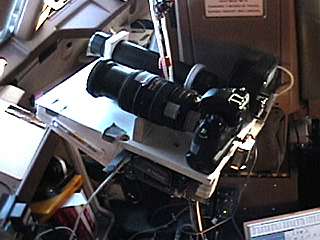
Electrical (power and control) connections established to/from camers/computers and gyros. Note green light on gyro power inverter #2. |
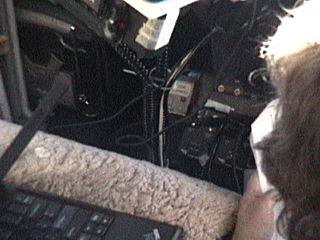
Cabling was rigged vertically downward and supported from below from platform center of gravity to minimize unbalanced torques on the platform. |
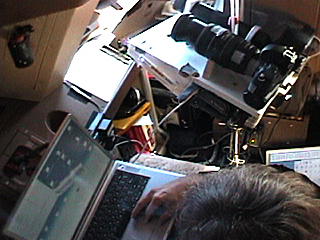
The camera platform was pre-balanced to tilt upward at an angle of 14.9°, the solar altitude at mid-totality, when suspended from it's support point at the COG. |

A third laptop (floor) was used for real-time eclipse navigation, computing flight position updates based upon winds aloft. Note solar filter now on observer's window bottom. |
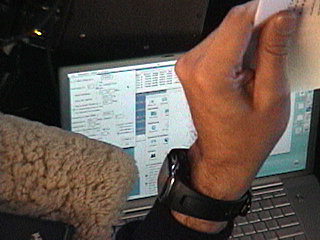
First of several in situ flight plan updates are computed via EFLIGHT and relayed to flight crew for input into Boeing 747-400 Flight Management System computer. |
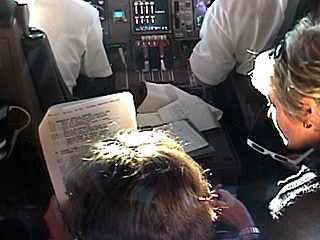
With ingress phase of eclipse well in progress Di Patterson (with eclipse viewing glasses in hand) assists Glenn Schneider in with final procedures review. |
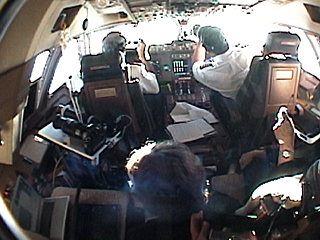
Cpt. John Dennis (with eclipse viewing glasses) and Cpt Brian Meade take a peek at the dwindling solar crescent as we align the aircraft for the Totality run. |
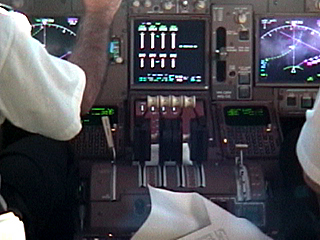
Penultimate set of target way points are ingested into and read back from the FMS. "Glass cockpit" display on right shows first three of five totality run waypoints. |
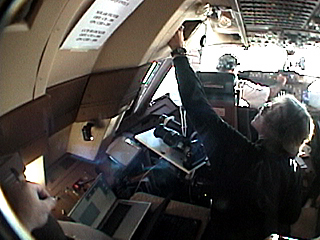
For the final time before totality, Glenn Schneider checks and re-pumps the vacuum pressure on the platform support suction cup in preparation for Totality. |
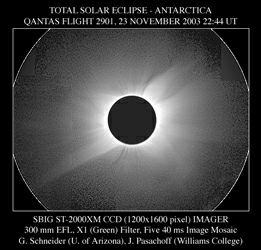
TOTALITY from CCD Camera (click image for more info) |

TOTALITY from FILM Camera (click image for more info) |